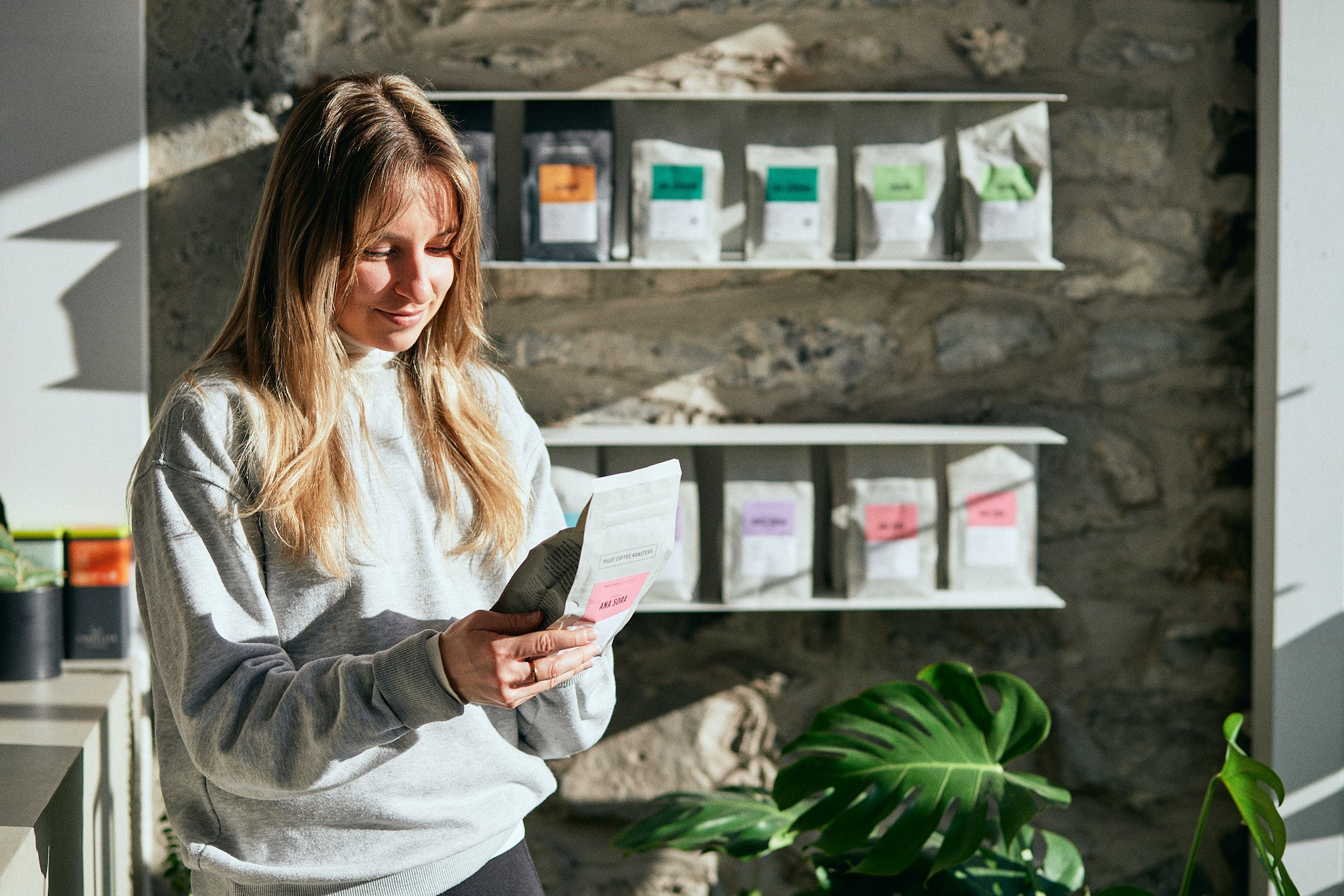- By Alex Lafrenière
From coffee tree, to fruit, to seed, to coffee
As discussed in previous articles, we now understand that the secret to preparing a cup of coffee that meets our expectations is to prepare it methodically and respecting the variables leading to a balanced extraction. However, know that the coffee bean will also have been pampered like a king before finding itself infused in your comforting morning cup. It will have matured in carefully controlled conditions, will have been carefully harvested and extracted from its fruit, will have had its rind dried in the sun and, finally, will have traveled to the four corners of the world.
Cultivating this little bin of happiness requires real know-how. From temperature stability to plant shade levels, every decision made by the grower will have an impact on the cup. I invite you to dissect with me some of the key variables in the cultivation of coffee plants during a coffee break!
From coffee tree, to fruit, to seed, to coffee
As discussed in previous articles, we now understand that the secret to preparing a cup of coffee that meets our expectations is to prepare it methodically and respecting the variables leading to a balanced extraction. However, know that the coffee bean will also have been pampered like a king before finding itself infused in your comforting morning cup. It will have matured in carefully controlled conditions, will have been carefully harvested and extracted from its fruit, will have had its rind dried in the sun and, finally, will have traveled to the four corners of the world.
Cultivating this little bin of happiness requires real know-how. From temperature stability to plant shade levels, every decision made by the grower will have an impact on the cup. I invite you to dissect with me some of the key variables in the cultivation of coffee plants during a coffee break!

Most bags of coffee available on the market are blends of several beans of different origins. Moreover, there are nearly 75 species of coffee around the world. Only two of these species represent 95% of the coffee consumed on the globe: Arabica and Robusta. The cup taste of these two coffee species differs enormously and it is possible to explain this difference by analyzing their production process.
On the one hand, Arabica coffee, the most widespread species in the world, is often described as fruity and light. Its plantations are real princesses: they are fragile, generally growing at altitude on mountain plateaus and sometimes even on the slopes of volcanoes, where the soils are particularly fertile. These growing areas maintain a particularly stable temperature throughout the day, as the humidity and heat of the day is stored and released at night. In addition, Arabica benefits from the unparalleled purity of mountain water. These coffee plants have every chance of developing the juiciest fruits. Furthermore, Mademoiselle Arabica does not appreciate direct sunlight - she therefore tries to slip between other plants and trees in order to benefit from the shade of their leaves. These leafy neighbors contribute to the complexity and unfolding of the richness of the coffee fruits. Finally, given these extremely comfortable conditions, the Arabica coffee species will take its time and will only produce its first cherries after 6 to 8 weeks. This long fruiting process allows the aromas and sugars to concentrate in the seeds and thus will lead to coffee beans that are sweet and have very little bitterness. The countries that have the geographical characteristics suitable for the cultivation of the Arabica species are mainly Brazil, Colombia, Mexico and Ethiopia.
Now, if we consider Arabica the princess of coffee species, the Robusta species would be the viking. Particularly aptly named, Robusta plants are very robust and find a way to grow in climatic conditions that are far from mild. Fearless, Robusta even resists the many threats from insects and diseases. Grown on low-altitude plains and in full sun, Robusta has a powerful, bitter and much more robust aromatic profile in the cup. Countries allowing the cultivation of the Robusta coffee species are those where the temperature is very high throughout the year and with very strong sunlight, such as Vietnam, Indonesia, Uganda and India.
FUN FACT : The caffeine content present in coffee allows it to combat certain environmental aggressions, such as insects. Robusta coffee is grown at lower altitudes and is therefore subject to being nibbled by many more bugs than plants grown in the mountains. This is why Robusta contains twice as much caffeine as Arabica coffee!
 Anyway, the first time I looked at a bag of coffee, the details of the label could have been written in French or in hieroglyphics and I would surely have learned the same thing (i.e., Nothing at all). Now that we have dissected the impact of climatic conditions on the cup, this reading seems much more informative to me. I challenge you to look at your next bag of coffee and target the parameters leading to the flavor profile you prefer. The origin of the grains comes from an African country covered in plains? You risk getting your hands on a coffee that will be strong and intense in the cup, perfect for making an espresso. Do you read on the bag that the coffee was grown at nearly 2,000m altitude in a Central American country? So, hurry up and head to the checkout, please! You may have found a delicate and bold coffee that will be most delicious in a manual filter.
Anyway, the first time I looked at a bag of coffee, the details of the label could have been written in French or in hieroglyphics and I would surely have learned the same thing (i.e., Nothing at all). Now that we have dissected the impact of climatic conditions on the cup, this reading seems much more informative to me. I challenge you to look at your next bag of coffee and target the parameters leading to the flavor profile you prefer. The origin of the grains comes from an African country covered in plains? You risk getting your hands on a coffee that will be strong and intense in the cup, perfect for making an espresso. Do you read on the bag that the coffee was grown at nearly 2,000m altitude in a Central American country? So, hurry up and head to the checkout, please! You may have found a delicate and bold coffee that will be most delicious in a manual filter.Good coffee! :)
- Alex


